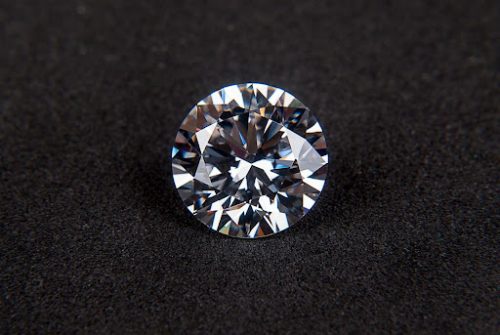
Diamond Inclusions are blemishes that are present inside the structure of the diamond and are known as inclusions. When carbon is transformed into a diamond, it is subjected to extremely high temperatures and pressures, resulting in inclusions forming. The presence of inclusions is one of the most significant factors considered when grading diamond clarity.
Twinning
There are a lot of various components that go into making a twinning wisp. Clouds, crystals, and feathers are the typical components of these portions. The appearance of twin wisps can vary greatly depending on the material they are constructed from. They could resemble thin lines that go through the diamond or look like vertical black and white stripes. They can take on tones of brown and yellow in some instances. They tend to originate in the region where a diamond is growing and are connected to deformed and twinned planes.
Does twinning affect diamond brilliance?
This means that the influence of inclusions on each diamond must be examined on an individual basis. If you find twinning wisps in the diamond you’re inspecting, you’ll need to consider several things. To begin with, look at the diamond’s overall clarity score. Twinning wisps are unlikely to impact your diamond’s appearance substantially if you purchase a diamond with a clarity grade of VS1 or better. There is no guarantee that a diamond with VS clarity will be as brilliant as a diamond with a higher clarity grade. High-resolution images, videos, and performance reports are essential when inspecting SI clarity diamonds.
Should I buy a twinning diamond?
Inexperienced diamond buyers may overlook twinning wisps, which might result in losing a high-quality stone. Clarity grading can only suggest a range of inclusions because each diamond is unique. There are some stunning SI1 diamonds in this collection and some duds. 360-degree video and diamond imaging can help you uncover magnificent diamonds within your budget, regardless of the clarity grade. Despite their appearance on inclusion plots, twinning wisps have little to no effect on a diamond’s brilliance and are rarely visible to the human eye.
Can twin wisp in diamond be a good thing?
Many customers feel tremendous pressure to strive for the highest clarity grade available, which consistently puts a strain on their budget. They do this in the mistaken belief that doing so will ensure they purchase a beautiful diamond; however, this is not the case. Experienced diamond buyers know that twinning wisps can be challenging to recognize and have little impact on a diamond’s performance. As a result, twinning wisps can be highly advantageous to a buyer.
Lab-grown diamonds
Lab-grown diamonds are created using cutting-edge technology that recreates, in a controlled environment, the conditions that exist during the formation of natural diamonds. In the end, a synthetic diamond is made, which, except for its hue, is identical to natural diamonds. Real diamonds can even be grown in a laboratory.
Unlike cubic zirconia, it’s not a gemstone. In terms of their chemical make-up and physical characteristics, mined diamonds are the most accurate analogs.
Benefits of lab-grown diamonds
Less costly Most of the time, synthetic diamonds are less expensive than naturally occurring diamonds.
However, this does not imply that a lab-created diamond is cheap. The price of obtaining diamonds from mines and laboratories is somewhat comparable. So why are lab-created diamonds less expensive? A diamond mined or created in a lab costs the same to cut, polish, and inspect. But before that, the expenses and procedures range greatly.
There is a lengthy distribution network for mined diamonds. To transform a rough diamond into a gem prepared for sale, miners, wholesalers, cutters, polishers, jewelry designers, and merchants are all required.
Conversely, the supply chain is substantially shorter because lab-created diamonds don’t need to be mined. A lab-created diamond costs less over time since it is handled less frequently.
Are lab diamonds a good investment?
Because lab diamonds are typically less expensive than mined diamonds, consumers may choose them if they are looking for an alternative that does not entail mining or if they are interested in purchasing a larger stone but staying within their financial means. The value might fluctuate over time, much like any other precious diamond. As a result of the shorter amount of time that lab diamonds have been available for purchase compared to natural diamonds, it is more difficult to speculate on how much they will cost in the coming years.
Conclusion
Many different pieces are involved in the construction of a twinned wisp. Clouds, crystals, and feathers make up the majority of these sections. Depending on the material and method of construction, twin wisps can take on a wide variety of appearances. Lab-grown diamonds are created using cutting-edge technology that mimics the natural circumstances that give rise to diamonds in a laboratory setting. There are man-made diamonds that are identical to real ones except for their hue, which can be found at rarecarat.com for a fraction of the price of natural diamonds.
Interesting Related Article: “Reason Why Diamonds Are Synonymous To Power & How to Choose One“

